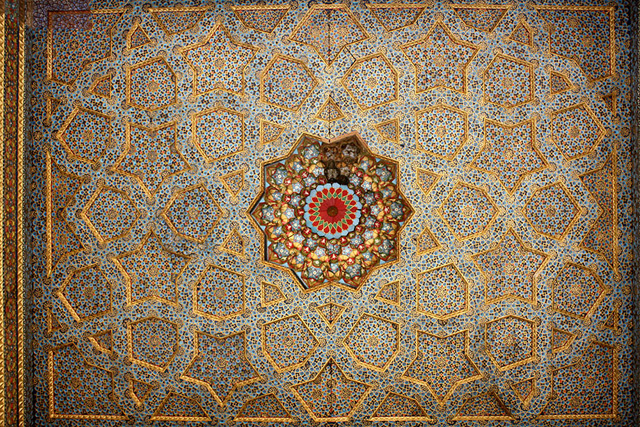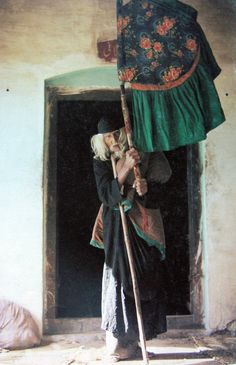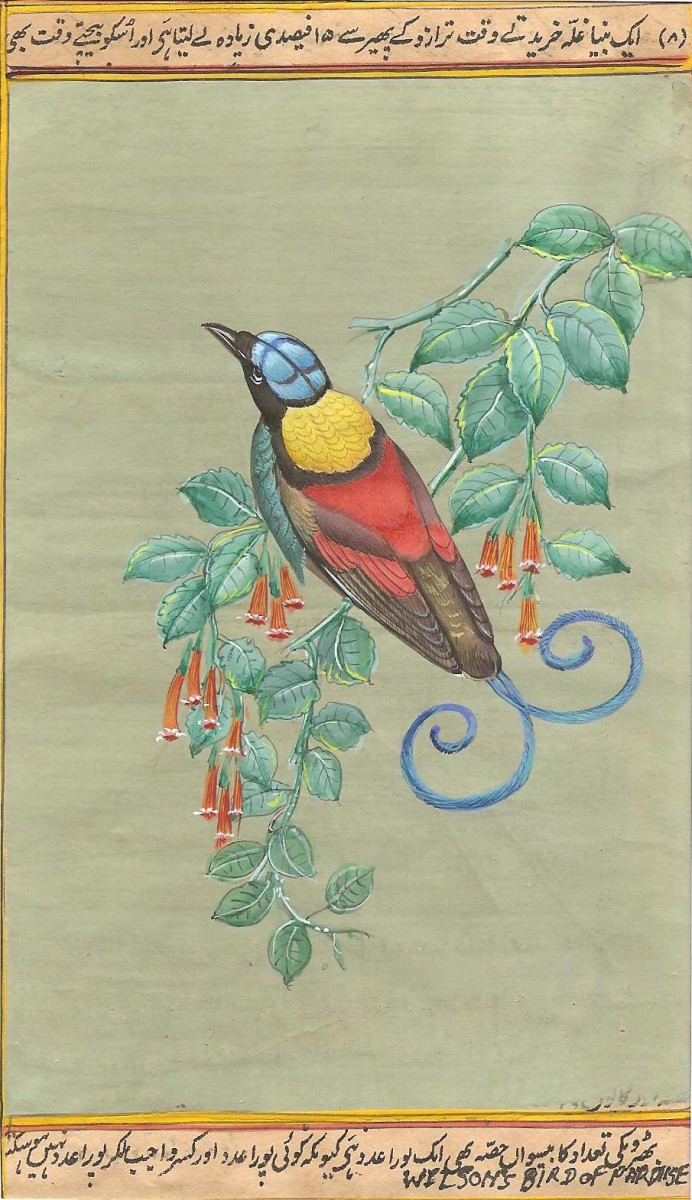A man of understanding
spoke to the tea merchants and tea drinkers.
“The one who tastes, knows.
The one who tastes not, knows not.
Don’t speak of a heavenly beverage;
offer it at your banquets and say nothing.
Those who like it will ask for more;
those who don’t, aren’t fit to drink it.
Close the shop of debate and mystery.
Open the teahouse of experience.”
Yusuf Hamadani
Hazrat Abū Ya’qūb Khwājā Yūsuf al-Hamadānī (q.s.) (1062-1140) is the first of the group of Central Asian Sufi masters known simply as Khwajagan (the Masters) of the Naqshbandi order. He is the 9th master in the silsila, the golden line of transmission of the secret of the tariqa Naqshbandiya.
He was an elevated shaykh from whom many of the well-known Sufi masters benefited. His deputies founded the Naqshbandiya, Yasaviya and Bektāshiya tariqahs, and founders of the Qadri and Chishti orders also benefited from his company.
He was born in 1062 at Būzanjird, near Hamadān (present-day Iran). He moved from Hamadan to Baghdad when he was eighteen years of age. He received traditional education in Islamic sciences such as jurisprudence, Hadith, and philosophy. He was a follower of the great Imam Abū Hanīfā. Later he was trained in the Sufi path by Khwājā Abū Alī Fārmadī, who is also known to be the Sufi master of Imam Ghazali.
He studied the Shafi’i school (one of the main schools of jurisprudence) under the supervision of the master of his time, Shaykh Ibrahim ibn Ali ibn Yusuf al-Fairuzabadi. He kept association in Baghdad with the great scholar, Abu Ishaq ash-Shirazi, who gave him greater deference than to any of his other students although he was the youngest.
He began his religious career with the cultivation of the religious sciences, becoming both a respected scholar and a popular preacher in Bagdhad.
He was so brilliant a jurisprudent that he became the marja` (reference) of his time for all scholars in that field. He was known in Baghdad, the center of Islamic knowledge, in Isfahan, Bukhara, Samarqand, Khwarazm, and throughout Central Asia.
Later in his life he secluded himself and left the world behind and travelled east, first settling in Herat and later in Merv, in present-day Turkmenistan. He became an ascetic and engaged in constant worship and mujahada (spiritual struggle), instructed by Shaykh Abu ‘Ali al-Farmadhi. He associated with Shaykh Abdullah Ghuwayni and Shaykh Hasan Simnani.
He made progress in self-denial and contemplation until he became the Ghawth (the supreme pole in the spiritual hierarchy of saints and masters) of his time.
He named four khalifas or successors, a pattern that repeated itself for several succeeding generations of the Khwajagan, including Ahmed Yesevi and Khwaja `Abdul Khaliq al-Ghujdawani, the next link in the Naqshbandi silsila.
He passed away in 1140 during a journey from Herāt to Merv, in a small town called Bāmiyīn. He was buried there, but later his body was reburied in Merv, where his tomb still stands. Near his tomb a large mosque and a big school were built.
Among his deputies are the following:
- Khwājā Abdullāh Barqī (d. 1160)
- Khwājā Hasan ibn Husain al-Andāqī (1069-1157)
- Khwājā Ahmad al-Yasavī (d. 1166), founder of the Yasaviya Sufi Order
- Khwājā Abd al-Khāliq al-Ghujdawānī, founder of the Naqshbandiya Sufi method, established and widespread later by Shah Bahauddin Naqshband.
He passed his secret to Abul `Abbas (q.s.) who in turn passed it on to `Abdul Khaliq al-Ghujdawani (q.s.). The latter received it directly from Yusuf al-Hamadani (q.s.) as well.
He was the keeper of the staff and turban of Sayyidinā Salmān al-Fārsī (r.a.a.).
The following account of Shaykh `Abd al-Qadir al-Gilani’s first encounter with al-Hamadani is related by Haytami in his ‘Fatawa hadithiyya’:
Abu Sa`id `Abd Allah ibn Abi `Asrun (d. 1189), the Imam of the School of Shafi`i, said: ‘When I began a search for religious knowledge I kept company with my friend, Ibn al-Saqa, who was a student in the Nizamiyya School, and it was our custom to visit the pious. We heard that there was in Baghdad a man named Yusuf al-Hamadani who was known as al-Ghawth, and that he was able to appear whenever he liked and was able to disappear whenever he liked. So I decided to visit him along with Ibn al- Saqa and Shaykh `Abd al-Qadir al-Gilani, who was a young man at that time. Ibn al-Saqa said, ‘When we visit Shaykh Yusuf al-Hamadani I am going to ask him a question the answer to which he will not know.’ I said: ‘I am also going to ask him a question and I want to see what he is going to say.’ Shaykh `Abd al-Qadir al-Gilani said: ‘O Allah, protect me from asking a saint like Yusuf Hamadani a question, but I will go into his presence asking for his baraka — blessing — and divine knowledge.’
‘We entered his association. He kept himself veiled from us and we did not see him until after some time. He looked at Ibn al-Saqa angrily and said, without having been informed of his name: ‘O Ibn al-Saqa, how dare you ask me a question when your intention is to confound me? Your question is this and your answer is this!’ Then he said: ‘I am seeing the fire of disbelief burning in your heart.’ He looked at me and said, ‘O `Abd Allah, are you asking me a question and awaiting my answer? Your question is this and your answer is this. Let the people be sad for you because they are losing as a result of your disrespect for me.’ Then he looked at Shaykh `Abd al-Qadir al-Gilani, made him sit next to him, and showed him honor. He said: ‘O `Abd al-Qadir, you have satisfied Allah and His Prophet with your proper respect for me. I see you in the future sitting on the highest place in Baghdad and speaking and guiding people and saying to them that your feet are on the neck of every wali! And I almost see before me every wali of your time giving you precedence because of your great station and honor.’
Ibn Abi `Asrun continues, ‘`Abd al-Qadir’s fame became widespread and all that Shaykh al-Hamadani said about him came to pass. There came a time when he did say, ‘My feet are on the necks of all the awliya,’ and he was a reference and a beacon guiding all people in his time to their destinations.’
The Golden Chain of transmission of the secret of the Naqshbandi tariqa
1. The Holy Prophet Muhammad (s.a.w.s.)
2. Abu Bakr as-Siddiq (r.a.a.)
3. Salman al Farsi(r.a.a.)
4. Al-Imam Qasim bin Muhammad bin Abu Bakr as-Siddiq (r.a.a.)
5. Al-Imam Ja’far as-Sadiq (a.s.)
6 Abu Yazid al Bistami (r.a.)
7. Abul Hasan al Kharqani (q.a.s.)
8. Abu Ali al Farmadi (q.a.s.)
9. Yusuf al Hamdani (q.a.s.)
10. Abul Abbas (al Khidr) (a.s.)
11. Abdul Khaliq al-Ghujadawani (q.a.s.)
12. Arif Righwari (q.a.s.)
13. Mahmud al Faghnawi (q.a.s.)
14. Ali Ramitani (q.a.s.)
15. Muhammad Baba Sammasi (q.a.s.)
16. Seyyid Amir Kullal (q.a.s.)
17. Qutub at Tariqah Shah Bahauddin Naqshband al Uwaysi al Bukhari (q.a.s.)
18. Alauddin Muhammad al Attar (q.a.s.)
19. Ya’qub al Charkhy (q.a.s.)
20. Ubeydullah al Ahrar as-Samarqandi (q.a.s.)
21. Muhammad az Zahid (q.a.s.)
22. Dervish Muhammad al Bukhari (q.a.s.)
23. Hajegi Emkeneki as Samarqandi (q.a.s.)
24. Muhammad al Baqibillah as Samarqandi (q.a.s.)
25. Mujaddid al Alf ath Thani Imam Rabbani Ahmad Faruq as Sirhindi (q.a.s.)
26. Urwat ul Wuthqa Muhammad Ma’sum ar Rabbani (q.a.s.)
27. Haji Sayfuddin ar Rabbani (q.a.s.)
28. Nur Muhammad al Badwani (q.a.s.)
29. Habibullah Mizra Jan i Janan al Mazhar (q.a.s.)
30. Ghulam Ali Abdullah ad Dehlawi (q.a.s.)
31. Ziyauddin Abu Naasan Muhammad Khalid al Baghidadi ash Shami (q.a.s.)
32. Sheikh Ismail an Narani (q.a.s.)
33. Khas Muhammad Shirwani (q.a.s.)
34. Sheikh Muhammad Yaraghi (q.a.s.)
35. Sayyid Jamaluddin al Ghumuqi al-Husseini (q.a.s.)
36. Abu Ahmed as Sughuri (q.a.s.)
37. Abu Muhammad al Madani (q.a.s.)
38. Sayyid Sharafuddin ad Daghistani (q.a.s.)
39. Sheik Abdullah Faiz ad Daghistani (q.a.s.)
40. Sheikh Muhammad Nazim Adil al Haqqani al Qubrusi (q.a.s.)








